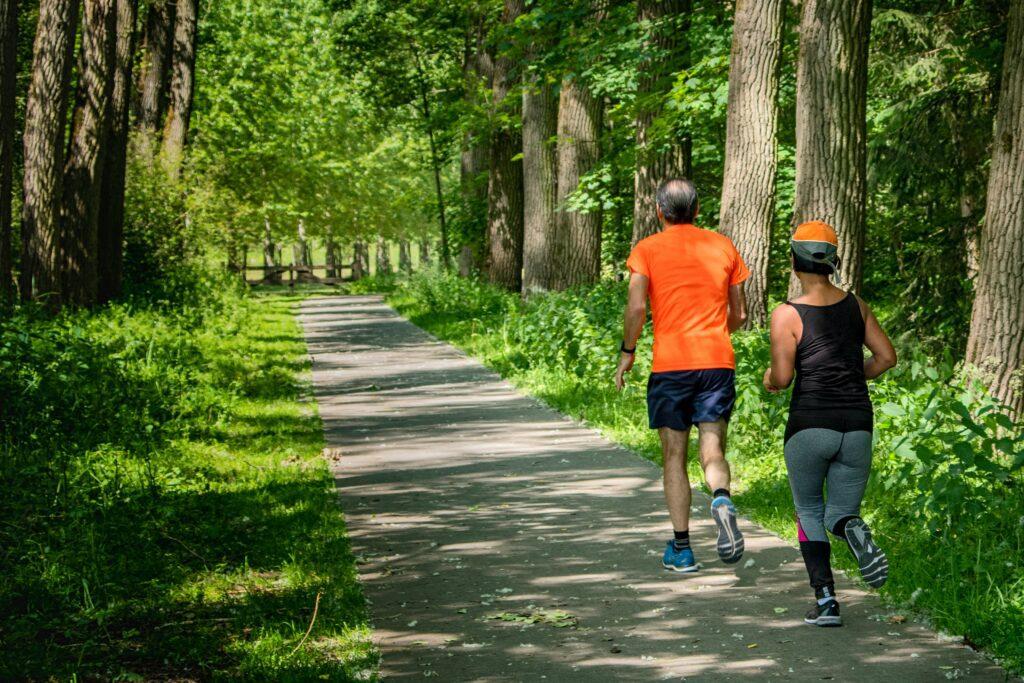As you age, maintaining core strength becomes increasingly important for seniors. Strong core muscles provide support to the lower back, help maintain balance, and enable important movements like standing, bending, and lifting. Regular exercise is crucial for maintaining core strength, as it plays a critical role in retaining good posture, preventing injuries, and supporting everyday activities. Whether you’re new to fitness or have been active throughout your life, there are various core exercises that you can do to strengthen your core and improve your overall fitness.
Key Takeaways:
- Ab exercises for seniors are essential for maintaining core strength.
- Strong core muscles provide support to the lower back and help maintain balance.
- Regular exercise plays a critical role in preventing injuries and supporting everyday activities.
- There are various types of core exercises that seniors can do, including modified planks, bridges, leg lifts, and the Superman pose.
- Consult with a healthcare provider or fitness professional to determine the best core exercises for your individual needs and abilities.
Why Core Strength Matters for Seniors
When it comes to maintaining overall health and well-being, core strength plays a crucial role, especially for seniors. Strong core muscles are key to supporting daily movements, improving balance, and promoting better posture. By prioritizing core exercises, seniors can experience a range of benefits that contribute to a higher quality of life.
One of the primary reasons why core strength is important for seniors is its impact on balance. As we age, balance naturally declines, making us more susceptible to falls and injuries. A strong core helps to stabilize the body and maintain an optimal center of gravity, reducing the risk of falls and improving overall balance.
In addition to balance, core exercises also simplify daily tasks for seniors. Whether it’s bending down to tie shoelaces or lifting objects off the ground, a strong core provides stability and support, making these tasks easier and safer to perform.
Furthermore, maintaining good posture is essential for seniors to reduce pain and discomfort. Core muscles play a crucial role in keeping the spine aligned and preventing slouching or hunching. By strengthening the core, seniors can improve their posture and reduce the strain on their backs, leading to less pain and a better overall posture.
Research has consistently shown that regular core exercises offer a wide range of benefits for seniors. In addition to improving balance and simplifying daily tasks, core strengthening activities can also slow down the aging process, prevent injuries, and increase overall body strength. By engaging in core exercises, seniors can enjoy a higher level of physical fitness and maintain better overall health.
Whether it’s through modified planks, seated twists, or stability ball exercises, there are various core exercises that are safe and effective for seniors. By incorporating these exercises into a regular fitness routine, seniors can enhance their core strength, improve their posture, and enjoy the numerous benefits that come with a strong and stable core.
How to Properly Train Core Strength
Before engaging in any core workout, it is crucial for seniors to understand how to properly train their core muscles. Proper core training involves learning techniques to engage and strengthen the core safely and effectively. By incorporating warm-up exercises and following the guidance of healthcare professionals, seniors can optimize their core training regimen for maximum benefits.
Engaging the Core
One fundamental aspect of proper core training is learning how to engage the core muscles. This can be achieved through exercises such as the abdominal drawing-in maneuver. To perform this maneuver, start by lying on your back in a supine position. Take a deep breath, and as you exhale, draw your belly button towards your spine, engaging your core. Hold this position for a few seconds, release, and repeat. By practicing this technique, you can activate the deep muscles of your core and enhance stability during exercises.
Warm-up Exercises for Core
Proper warm-up exercises are essential to prepare the core muscles for the upcoming workout. A recommended warm-up exercise is lying on your back in a supine position and practicing engaging the core, as mentioned earlier. Additionally, gentle stretching exercises and low-impact activities such as walking or cycling can help increase blood flow to the core muscles and improve flexibility, reducing the risk of injury during the workout.
“Proper warm-up exercises are essential to prepare the core muscles for the upcoming workout.”
It is important to note that seniors should be cautious when performing classic core exercises like sit-ups and crunches. These exercises can put stress on the spine and neck, potentially leading to discomfort or injury. Instead, seniors should focus on alternative exercises that target the core without straining these vulnerable areas.
Consulting with Healthcare Professionals
To ensure proper core training and safety, it is highly recommended that seniors consult with their healthcare provider or a fitness professional. These professionals can assess individual needs and provide tailored core exercise recommendations. Consulting with a healthcare provider is particularly important for seniors with pre-existing medical conditions or physical limitations, as they can help determine the most suitable core exercises and modifications.
“To ensure proper core training and safety, it is highly recommended that seniors consult with their healthcare provider or a fitness professional.”
 In conclusion, training core strength is essential for seniors to maintain overall strength, stability, and mobility. By engaging the core properly and incorporating appropriate warm-up exercises, seniors can strengthen their core safely and effectively. Remember to consult with healthcare professionals, especially if you have any existing health concerns or physical limitations. With the right guidance and techniques, seniors can enjoy the many benefits of a strong and functional core.
In conclusion, training core strength is essential for seniors to maintain overall strength, stability, and mobility. By engaging the core properly and incorporating appropriate warm-up exercises, seniors can strengthen their core safely and effectively. Remember to consult with healthcare professionals, especially if you have any existing health concerns or physical limitations. With the right guidance and techniques, seniors can enjoy the many benefits of a strong and functional core.
Ab Exercises for Seniors
When it comes to strengthening your core and abdominal muscles, there are plenty of exercises that seniors can incorporate into their fitness routine. These exercises not only improve core strength but also help maintain balance and stability for everyday activities. Let’s explore a few effective core exercises for seniors:
1. Chair-Based Ab Exercises
If you prefer seated workouts or feel unsteady on your feet, chair-based ab exercises are a fantastic option. Seated twists and seated leg raises engage the abdominal muscles while providing support and stability.
2. Modified Planks
Modified planks are a safe and effective way to engage the core muscles without straining the spine or neck. To perform a modified plank, support your torso with your forearms on the floor and your knees on the ground. This exercise targets the deep abdominal muscles and helps strengthen the entire core.
3. Stability Ball Exercises
Using a stability ball can add an element of challenge and engagement to your core exercises. Stability ball exercises like crunches, ball bridges, and seated twists activate the abdominal muscles while improving balance and coordination.
4. Seated Twists
Seated twists specifically target the oblique muscles, which are crucial for maintaining spinal stability and proper posture. Sitting on a chair, twist your torso to the right and then to the left, engaging your core throughout the movement.
5. Seated Leg Raises
Seated leg raises focus on strengthening the lower abdominal muscles. While seated in a chair, extend your legs straight and lift them off the ground, engaging your abs. Lower your legs back down with control and repeat for a set number of repetitions.
6. Wall Exercises
Using a wall as support can provide stability and assist in performing various core exercises. Wall sit-ups, where you lean against a wall and lift your upper body towards your knees, engage the abdominal muscles while minimizing strain on the back and neck.
Remember to maintain proper form throughout these exercises and listen to your body. If any exercise causes pain or discomfort, stop immediately and consult with a healthcare professional. Now, let’s take a look at these core exercises in action:
These core exercises are effective in strengthening the abdominal muscles and improving core stability. Incorporating a variety of exercises that target different areas of the core can provide well-rounded strength and support for seniors. Remember to start slowly, focus on proper form, and gradually increase intensity as you build strength. Stay consistent and enjoy the benefits of a strong and healthy core!
Additional Tips for Seniors
When it comes to core exercises for seniors, safety should always be a top priority. Here are some important tips to ensure you can exercise with confidence:
- Exercise with Proper Form: Pay attention to your posture and form during core exercises. Engage your core muscles by drawing your belly button towards your spine. This helps activate the right muscles and prevents strain on your back.
- Avoid Crunches: Crunches can strain your neck and spine, especially as you age. Instead, opt for exercises that target your core without putting unnecessary pressure on these areas. Modified planks, seated twists, and stability ball exercises are great alternatives.
- Consult with Your Healthcare Provider: It’s always a good idea to consult with your healthcare provider or a fitness professional before starting any new exercise routine. They can provide personalized advice and recommend exercises that are safe for your specific needs and abilities.
- Start with Low-Impact Exercises: If you’re just getting started or returning to exercise after a long break, begin with low-impact core exercises. This allows your body to gradually adapt and build strength without risking injury. As you feel more comfortable, you can gradually increase the intensity and difficulty of your workouts.
By following these tips, you can exercise with confidence, knowing that you are taking the necessary precautions to keep yourself safe and avoid any unnecessary risks.
Conclusion
In conclusion, core exercises are essential for seniors to strengthen their core muscles, improve balance, enhance posture, reduce pain, and increase overall body strength. By incorporating chair-based exercises, modified planks, stability ball exercises, and leg lifts into a regular fitness routine, seniors can enjoy the benefits of a strong and healthy core.
It is important to prioritize safety when performing core exercises. Consulting with a healthcare provider or fitness professional can help determine the best exercises and modifications based on individual needs and abilities. Remember to maintain proper form, engage the core muscles, and avoid exercises that may strain the spine or neck.
With dedication and consistency, seniors can make significant progress in their core strength and overall fitness. The key is to start with low-impact exercises and gradually increase intensity and difficulty. By following these guidelines and incorporating a variety of core exercises, seniors can maintain or improve their quality of life by cultivating a strong and functional core.








